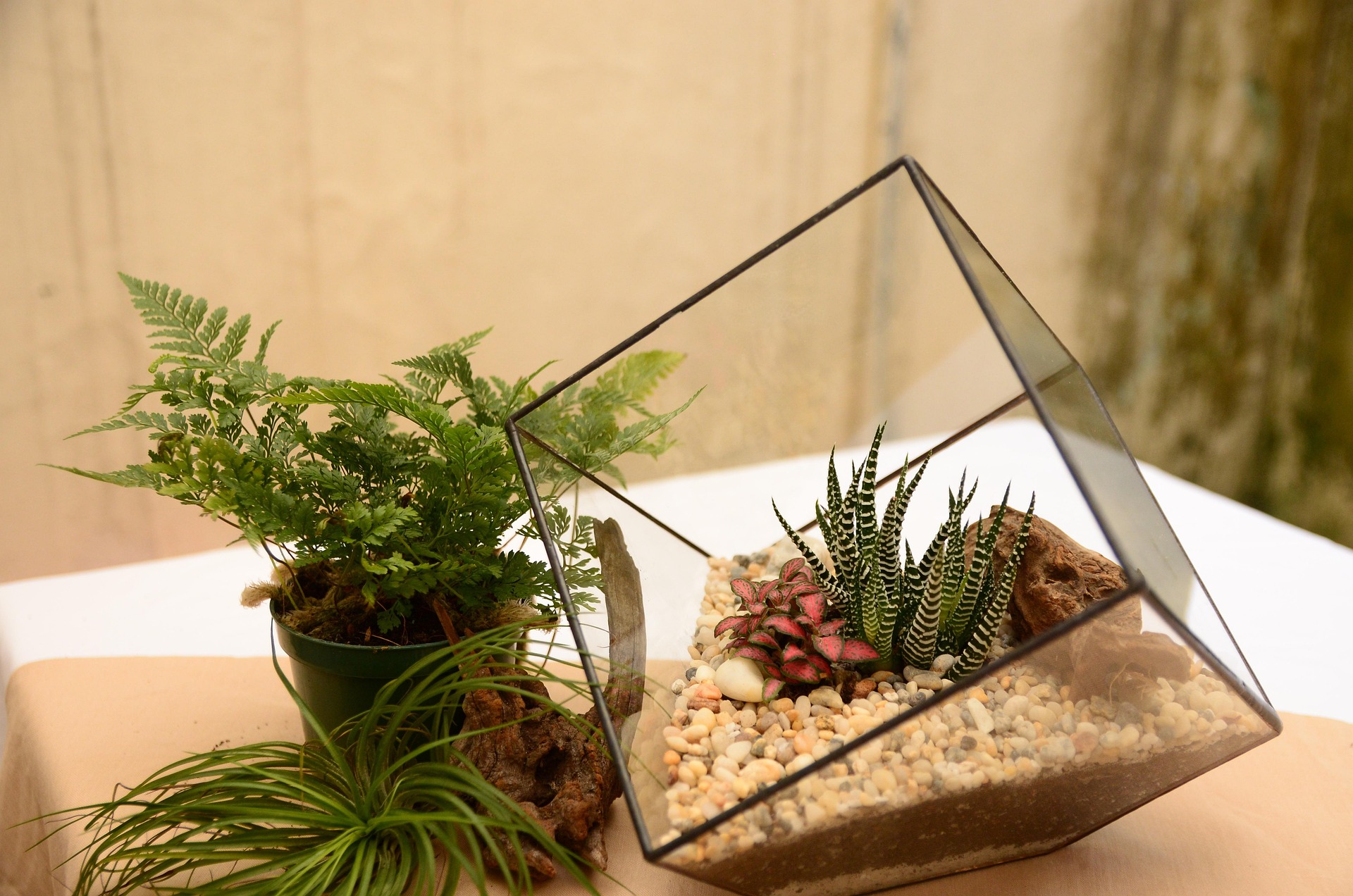Terrariums 2.0: Reinventing Miniature Ecosystems for Modern Living Spaces
Welcome to the world of next-generation terrariums, where science meets style in a captivating blend of nature and design. These miniature ecosystems are no longer just glass containers filled with plants; they've evolved into sophisticated, interactive art pieces that bring a touch of living wonder to our homes. Join us as we explore how terrariums are being reimagined for the 21st century, offering a fresh perspective on bringing the outdoors in.

High-Tech Habitats
The latest trend in terrarium design involves integrating smart technology to create self-sustaining ecosystems. These high-tech habitats use sensors to monitor soil moisture, temperature, and light levels, automatically adjusting conditions for optimal plant growth. Some even feature built-in LED lighting systems that mimic natural daylight cycles, allowing terrariums to thrive in spaces with limited natural light. This fusion of nature and technology not only ensures healthier plants but also adds an interactive element to home decor.
Sculptural Designs and Unconventional Materials
Moving beyond traditional glass containers, contemporary terrarium artists are experimenting with sculptural forms and unexpected materials. Concrete, metal, and even 3D-printed structures are being used to create unique vessels that double as statement pieces. These avant-garde designs challenge our perception of what a terrarium can be, turning them into functional sculptures that serve as focal points in modern interiors.
Bioactive Systems: A Slice of Nature
Bioactive terrariums represent a shift towards creating more authentic, self-sustaining ecosystems. These setups include not just plants, but also beneficial microorganisms, insects, and sometimes small animals like frogs or geckos. The goal is to replicate a natural environment as closely as possible, creating a balanced system that requires minimal human intervention. This approach not only results in healthier, more vibrant terrariums but also offers a fascinating glimpse into complex ecological interactions.
Themed Worlds and Storytelling
Terrariums are becoming canvases for creativity, with designers crafting miniature worlds that tell stories or represent specific biomes. From tiny urban landscapes complete with skyscrapers and parks to fantastical alien planets with exotic plants, these themed terrariums blur the line between gardening and art. This trend allows homeowners to express their personalities and interests through living decor, turning terrariums into conversation pieces that evolve over time.
Educational and Interactive Elements
As the interest in hands-on learning grows, terrariums are finding new roles in education and interactive home experiences. Some designs incorporate magnifying glasses or digital microscopes, allowing observers to study plant growth and soil ecosystems up close. Others feature removable sections or modular designs that encourage experimentation with different plant combinations and care techniques. This educational aspect makes terrariums particularly appealing for families and curious individuals looking to deepen their understanding of plant life.
Conclusion: A New Era for Miniature Ecosystems
The reinvention of terrariums for modern living spaces represents a fascinating convergence of design, technology, and nature. These evolving miniature ecosystems offer more than just aesthetic appeal; they provide a tangible connection to the natural world, opportunities for learning, and a canvas for creative expression. As we continue to seek ways to bring nature into our increasingly urban lives, terrariums 2.0 stand out as versatile, engaging solutions that blend seamlessly with contemporary interiors while offering a slice of living art. Whether you’re a plant enthusiast, a tech lover, or simply someone looking to add a unique touch to your home, these reimagined terrariums offer a fresh and exciting way to green your space.





